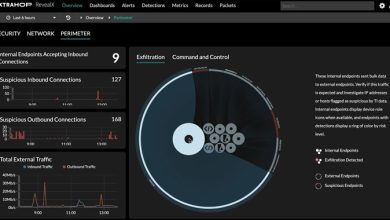Overcoming the Challenges of Cybersecurity: How an Exposure Management Platform Can Help

Cybersecurity is a constant battle, with cybercriminals constantly finding new ways to infiltrate systems and steal sensitive information. Cybersecurity professionals are on the front working to protect organisations but the challenges they face are becoming more complex and multifaceted. In this article, we’ll examine 3 real-world challenges facing cybersecurity professionals and how an exposure management platform can help organisations overcome them and better protect themselves from cyber threats.
Challenge 1: Security Programs are Reactive, not Proactive
One of the main challenges for cybersecurity firms is that their security protocols are often reactive rather than proactive. This means that they react to problems as they arise rather than working to prevent them. This approach is ultimately ineffective because it is impossible to be in two places at once, foresee every attack, and fix every security hole. Many security solutions rely on a collection of technologies to identify and counteract dangers but this strategy is like playing chess by only reacting to the opponent’s moves, making it difficult to succeed. Success in cybersecurity requires proactivity by fixing vulnerabilities, hardening user identities and access rights before they are targeted by attackers by anticipating risks and understanding the interdependence of individuals, assets, and systems.
Challenge 2: The Attack Surface Isn’t Siloed but Most Security Programs are
Another challenge for cybersecurity organisations is that while most security programs are isolated from one another, the attack surface is not. This hinders the ability of security teams to properly mitigate threats. Siloed security initiatives produce disparate pieces of information that are difficult to link and use effectively. To effectively decrease risk, cybersecurity teams need a consolidated, predictive, and proactive approach to managing exposure across the entire attack surface, requiring a system that can reveal hidden assets, anticipate potential dangers, and prioritise defensive efforts.
Challenge 3: There’s More Data Available Than Ever Before, Yet It’s Difficult for Security Professionals to Correlate and Applies the Data in Meaningful Ways
The third challenge facing cybersecurity firms is the difficulty in using the vast amount of data available in meaningful ways. This challenge hinders the ability of security managers to assign a numerical value to potential threats. The issue is that there is too much data being produced every day by different security technologies, and no good method to examine it in context. Security teams have no choice but to put the data into spreadsheets in order to get a consolidated view of their attack surface. This is not only ineffective but a waste of time. To perform optimally, security teams require a system that can generate actionable insights on potential threats and vulnerabilities, and enable organisations to regularly examine their attack surface in terms of vulnerabilities, misconfigurations, and user rights.
An Exposure Management Program Can Help
An exposure management programme based on a technological platform may assist businesses in addressing real-world difficulties and improving their defences against cyber-attacks by giving full visibility across the attack surface, predicting risks, and making smarter decisions. There are three primary qualities to search for in a good exposure management system:
- Comprehensive Visibility
- The platform should present a consolidated view of on-premises and cloud-based assets and the software, configuration, and entitlement vulnerabilities associated with each. By doing so, security teams may gain visibility into the full attack surface, patch up any holes, and provide a foundation for better risk management.
- Prediction and Prioritisation
- The platform should provide context about the linkages between assets, exposures, privileges, and threats across an attack route, relying on huge data sets from numerous point instruments to aid users in anticipating the effects of a cyber attack. By doing so, security teams can consistently zero in on the attack vectors that pose the most threat.
- Effective Cyber-Risk Communication
- Executives in charge of security and top executives in charge of running businesses require a consolidated, business-aligned perspective on cyber risk that includes both measurable key performance indicators (KPIs) and the ability to compare results to those of competitors. The platform should deliver useful information about cyber risk, including the worth of daily preventative measures, to the business as a whole.
Organisations may better protect themselves from cyber attacks by adopting an exposure management program to help them deal with the numerous problems of cybersecurity. An excellent exposure management tool will provide full visibility, accurate prediction and prioritisation, and clear metrics for communicating cyber risk. This preventative measure will help businesses lessen their vulnerability to cyber threats.
Interact with the PIX below to learn more about Tenable’s Risk Management and find out more by signing up to be contacted by them.






